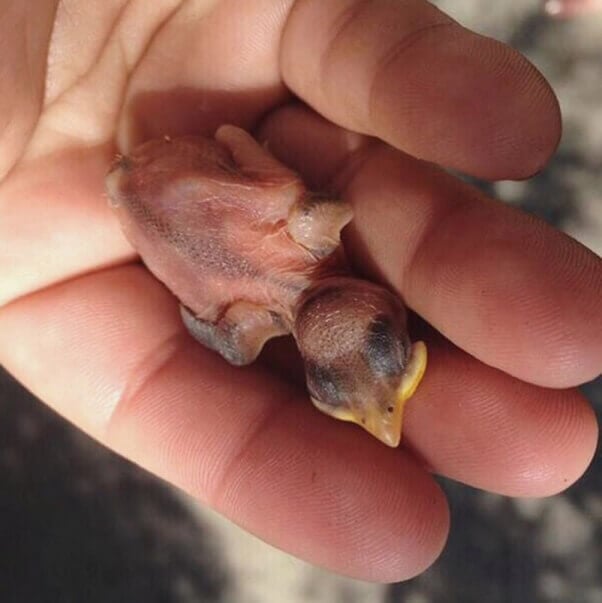
Nurturing the Fragile Lives: A Comprehensive Guide to Caring for Baby Birds
Introduction
Baby birds, with their delicate bodies and vulnerable nature, evoke a sense of tenderness and responsibility in our hearts. Whether they have fallen from their nests or been orphaned, these tiny creatures rely on human intervention for their survival. Caring for baby birds requires a deep understanding of their unique needs and a commitment to providing them with the best possible care. This comprehensive guide will equip you with the knowledge and techniques necessary to nurture these fragile lives, ensuring their well-being and giving them a chance to thrive.
Identifying Baby Birds
The first step in caring for baby birds is to identify their species. Different species have specific dietary and care requirements, so it’s crucial to determine their type accurately. Here are some common characteristics to help you identify baby birds:
- Size and Appearance: Baby birds vary in size depending on their species. They may have soft, downy feathers or developing pin feathers.
- Beak: The shape and color of the beak can provide clues about the bird’s diet. Insectivores have thin, pointed beaks, while seed-eaters have short, thick beaks.
- Feet: Perching birds have three toes forward and one toe backward, while altricial birds have weak feet and cannot perch.
- Behavior: Baby birds may exhibit different behaviors, such as begging for food, opening their mouths wide, or shivering.
Providing Shelter
Baby birds need a warm, safe, and comfortable shelter to protect them from the elements and predators. Create a cozy nest using a small box or basket lined with soft materials such as tissue paper, cotton balls, or shredded paper. Ensure the nest is well-ventilated and large enough for the bird to move around comfortably.
Feeding Baby Birds
Feeding baby birds is a critical aspect of their care. The type of food they require depends on their species. Here are some general guidelines:
- Insectivores: Feed baby insectivores a diet of live insects, such as mealworms, crickets, or waxworms. Offer them insects several times a day, using tweezers or a small spoon.
- Seed-eaters: Feed baby seed-eaters a mixture of soaked seeds, such as millet, canary seed, or sunflower seeds. You can also offer them hard-boiled egg yolk or commercial baby bird formula.
- Omnivores: Feed baby omnivores a combination of insects, seeds, and soft fruits, such as berries or bananas.
Frequency and Amount of Feeding
The frequency and amount of feeding depend on the age and species of the bird. As a general rule, feed baby birds every 2-3 hours during the day and less frequently at night. The amount of food should be small enough to fit comfortably in their beak. Avoid overfeeding, as it can lead to digestive problems.
Hydration
Baby birds need regular hydration to stay healthy. Offer them water in a shallow dish or use a dropper to gently drip water into their beak. Avoid giving them milk or sugary drinks, as these can be harmful.
Cleaning and Hygiene
Maintaining cleanliness is essential for preventing infections and ensuring the bird’s well-being. Gently clean the bird’s nest daily, removing any soiled materials. Use a damp cloth to wipe the bird’s beak and feet, taking care not to get water in its eyes or ears.
Temperature Regulation
Baby birds cannot regulate their body temperature effectively, so it’s crucial to provide them with a warm environment. Place a heating pad or hot water bottle under half of the nest, leaving the other half cooler for the bird to move to if it gets too warm. Monitor the bird’s temperature regularly by gently touching its belly. It should feel warm to the touch but not hot.
Rehabilitation and Release
Once the baby bird is strong enough, it’s time to prepare it for release back into the wild. Gradually reduce the amount of food and warmth provided, encouraging the bird to become more independent. Offer it live insects or seeds to practice catching and eating. When the bird is fully feathered and can fly confidently, it’s ready to be released. Choose a safe location with plenty of food and shelter, and release the bird at dusk or dawn when predators are less active.
Special Considerations
Caring for baby birds can be challenging, and there may be situations that require special attention:
- Injured Birds: If the baby bird is injured, seek professional veterinary care immediately. Do not attempt to treat the injury yourself.
- Orphaned Birds: If you find an orphaned baby bird, it’s crucial to determine if it is truly orphaned. Observe the nest area for several hours to see if the parents return. If they do not, proceed with care as described above.
- Sick Birds: If the baby bird exhibits signs of illness, such as lethargy, diarrhea, or difficulty breathing, contact a veterinarian or wildlife rehabilitator promptly.
Conclusion
Caring for baby birds is a rewarding experience that requires patience, dedication, and a deep love for these fragile creatures. By understanding their unique needs and providing them with the best possible care, you can help them thrive and give them a chance to return to their natural habitat. Remember, every life, no matter how small, is precious, and it’s our responsibility to protect and nurture it.
